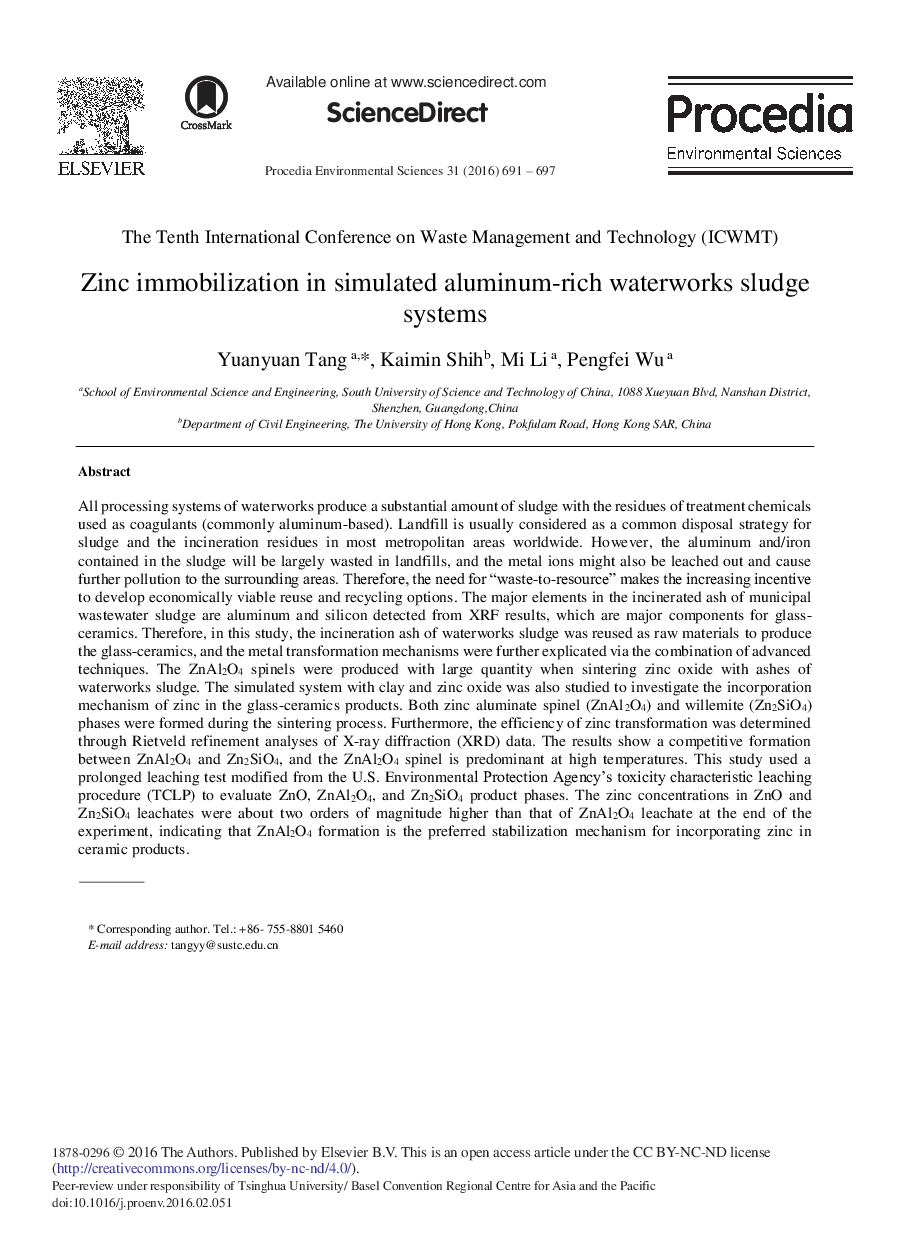| کد مقاله | کد نشریه | سال انتشار | مقاله انگلیسی | نسخه تمام متن |
|---|---|---|---|---|
| 4401603 | 1618613 | 2016 | 7 صفحه PDF | دانلود رایگان |
All processing systems of waterworks produce a substantial amount of sludge with the residues of treatment chemicals used as coagulants (commonly aluminum-based). Landfill is usually considered as a common disposal strategy for sludge and the incineration residues in most metropolitan areas worldwide However, the aluminum and/iron contained in the sludge will be largely wasted in landfills, and the metal ions might also be leached out and cause further pollution to the surrounding areas. Therefore, the need for “waste-to-resource” makes the increasing incentive to develop economically viable reuse and recycling options. The major elements in the incinerated ash of municipal wastewater sludge are aluminum and silicon detected from XRF results, which are major components for glass-ceramics. Therefore, in this study, the incineration ash of waterworks sludge was reused as raw materials to produce the glass-ceramics, and the metal transformation mechanisms were further explicated via the combination of advanced techniques. The ZnAl2O4 spinels were produced with large quantity when sintering zinc oxide with ashes of waterworks sludge. The simulated system with clay and zinc oxide was also studied to investigate the incorporation mechanism of zinc in the glass-ceramics products Both zinc aluminate spinel (ZnAl2O4) and willemite (Zn2SiO4) phases were formed during the sintering process Furthermore, the efficiency of zinc transformation was determined through Rietveld refinement analyses of X-ray diffraction (XRD) data. The results show a competitive formation between ZnAl2O4 and Zn2SiO4, and the ZnAl2O4 spinel is predominant at high temperatures. This study used a prolonged leaching test modified from the U.S Environmental Protection Agency's toxicity characteristic leaching procedure (TCLP) to evaluate ZnO, ZnAl2O4, and Zn2SiO4 product phases. The zinc concentrations in ZnO and Zn2SiO4 leachates were about two orders of magnitude higher than that of ZnAl2O4 leachate at the end of the experiment, indicating that ZnAl2O4 formation is the preferred stabilization mechanism for incorporating zinc in ceramic products.
Journal: Procedia Environmental Sciences - Volume 31, 2016, Pages 691–697
